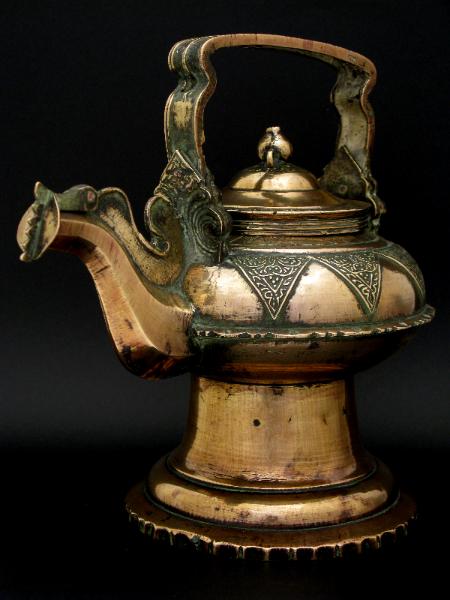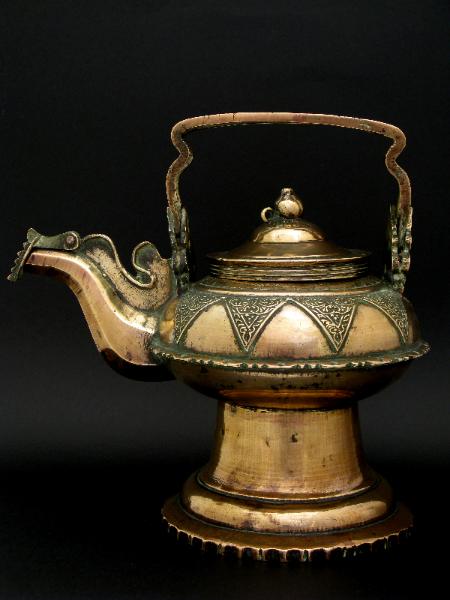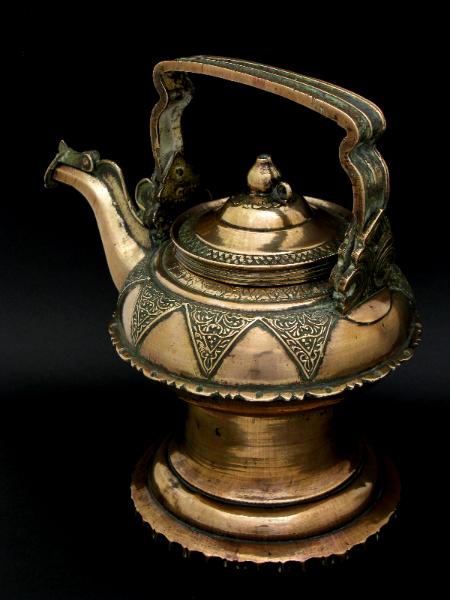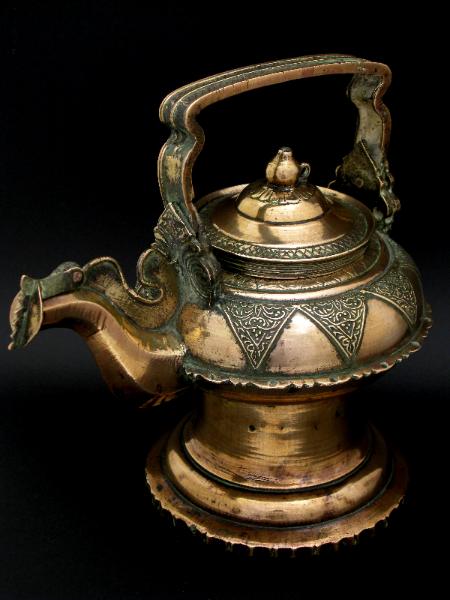
543




Sumatra/Malay Peninsular, late 19th century
height: 25.3 cm
This kettle, cast using the lost wax process, stands on a tall, splayed base with a prominent, engraved handle. It is decorated with a prominent band of stylised triangular bamboo shoot motifs (
pucuk rebung) motifs, these being identifying characteristics of Malay brassware but which are also commonly used in Malay textile design and woodwork.
It has a prominent spout with a wavy fringe and a cover topped with a lotus-bud finial that sits over, rather than in, the well of the kettle. A serrated and pierced decorative fringe runs around the body of the kettle.
Unusually for a kettle of this type, it is also fitted with a spout cover, which has been cast with a serrated fringe.
Malays did not use eating implements but ate with their right hands only. This type of kettle was used not for tea or coffee but to store cold water that was used to wash the right hand after eating. The left hand was used to hold the kettle by the handle and the kettle was then tipped to pour water over the right hand, the water splashing into a basin or onto the ground if eating outside. In the past, Malays tended to eat sitting on the floor or ground, so the kettle is designed to stand on the floor, hence its sizeable and solid base to give it elevation.
Inventory no.: 543
SOLD
To see the Gallery’s complete collection of Islamic and Indian ewers, click HERE.
To see more examples of Malay brassware, click
HERE.

